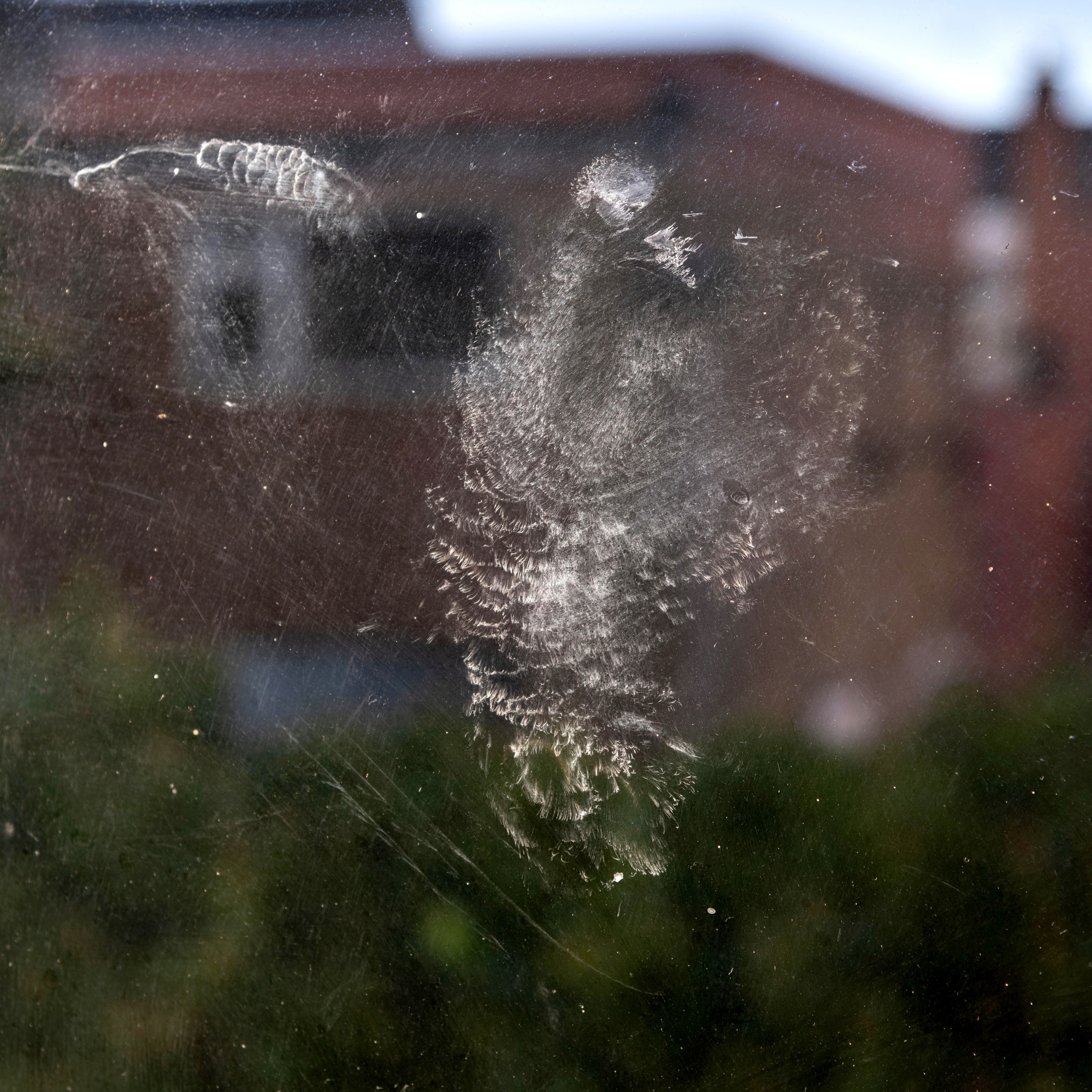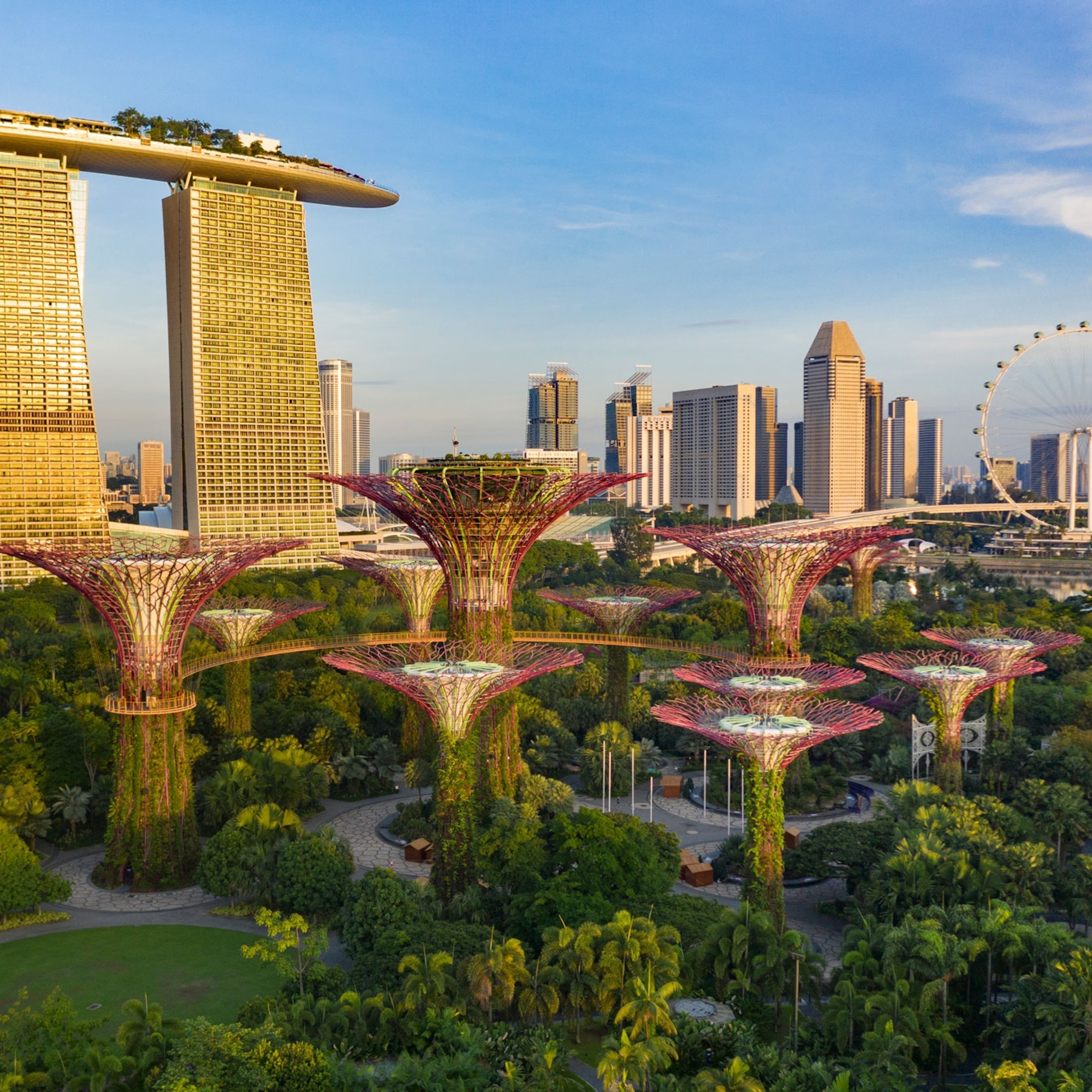
One unexpected way to reduce violent crime? Create green spaces.
Cleaning up abandoned lots and creating community gardens doesn't just make a neighborhood feel safer—a growing body of evidence shows they really become safer.
Darnell Ishmel’s street in Flint, Michigan, used to be lined with waist-high grass on vacant lots. The blight felt overwhelming, “to the point where I [didn’t] even want to walk outside,” he says. “The dogs are roaming just beyond the corner—you can’t even drive at certain intersections because you can’t see beyond the tall grass at the oncoming traffic.”
That was about a decade ago, when Flint was known for its high rate of violent crime, before the city’s water crisis hit in 2014. In 2012, according to FBI data, 2,774 violent crimes were reported to the Flint Police Department. In 2022, 985 were reported.
Like other “legacy cities” that have experienced significant economic decline and population loss, Flint is still struggling. But now, through the Genesee County Land Bank’s Clean & Green program, Ishmel and hundreds of other residents have been mowing vacant lots. Greening projects like these maintain abandoned spaces, either by mowing them or converting them into gardens and parks. “When we take care of our neighborhood, there’s something about that removal of the blight—it just makes us feel a little bit better,” Ishmel says.
But these projects don’t just make the neighborhood feel safer.
Researchers who have been studying the effects of greening in Flint; Philadelphia; Youngstown, Ohio; and other legacy cities have shown repeatedly that it actually reduces violent crime.
“It is one of the most consistent findings I’ve ever had in my 34-year career of doing research,” says Marc A. Zimmerman, professor at the University of Michigan School of Public Health.
Transforming neighborhood blight
A review of 45 papers found that the presence of green spaces, including parks and trees, reduces crime in urban areas. In Philadelphia, researchers found an association between planting grass and trees and gun assaults.
And in Flint, Zimmerman and his colleagues compared streets where community members maintained vacant lots through Clean & Green with streets where vacant lots were left alone, over five years. The maintained ones had almost 40 percent fewer assaults and violent crimes. Another study showed that segments of neighborhoods with maintained lawns had lower rates of child maltreatment.
This team has been studying various iterations of greening, from just mowing vacant lots to installing community gardens, parks, and public art. Some projects involve professional mowers; others are led and managed by residents. In all these situations, the greening reduces crime, but one study found that while simply maintaining vacant lots reduced burglaries, turning them into gardens reduced assaults. And when residents are more involved, the effect is heightened.
In Youngstown, they found that street segments with professionally mowed vacant lots had declines in violent crime density, compared to control lots. Segments “greened” through community engagement had even sharper declines. In Flint, from 2015 to 2018, areas where vacant properties were owned and stewarded by the land bank experienced reductions in serious, violent, and firearm crime—as well as crime where youths were victims—than those not owned by the land bank.
How does greening reduce violent crime?
These studies measure the decrease in crime, but it’s more difficult to pinpoint why crime rates are decreasing.
Zimmerman, who also works as co-director of the Institute for Firearm Injury Prevention, and principal investigator and director of the Michigan Youth Violence Prevention Center, points to the “broken windows” and “busy streets” theories. The idea is that one broken window sends a message “that nobody’s watching, that you can get away with things, and you can do nefarious activities, and nobody cares,” he explains. “Busy streets” is the opposite: It says engaging residents in revitalizing neighborhoods will help develop a sense of community that’s empowering.
“From our research, it helps people feel better about each other, about themselves, about their neighborhood, about their community, about their street,” Zimmerman says. And it says to people who might commit crimes “that people are paying attention and care about this place.”
A large body of research has shown that caring for green spaces improves the mental health of those who live near those spaces. In the child maltreatment study, the researchers noted, “One potential explanation for the association between micro-neighborhood greening and reduced child maltreatment may be the effect that micro-neighborhood greening has on parents’ stress. Stress is strongly associated with child maltreatment.”
(How 'nature deprived' neighborhoods impact the health of people of color.)
Youth engagement may also be key to these programs’ success in reducing crime—and a benefit in itself. Zimmerman and his team interviewed six organizations doing greening work around the country, and participants said that centering youth voices was essential.
Ishmel brings young people to Clean & Green through a nonprofit he founded, CHANGE Foundation. He says he sees “the pride on their faces, for putting on their Clean & Green shirts and going out with their tools and their gloves and actually doing something…positive for their neighborhood.”
Clean & Green focuses mostly on mowing, for which nonprofits such as block clubs agree to mow 25 lots regularly, and they get a stipend of $25 per lot. But it also funds projects such as planting native species.
This work also gives young people the chance to have their voices heard in community meetings, Ishmel says. “These are people that are downtown, and you know, they’re paid to create reports and do presentations and do studies etc. about the community. But it’s not always that the actual community is there at the table, particularly the young people,” he says.
Zimmerman and his colleagues’ research is ongoing. In Detroit, they are comparing types of greening—mowing, community gardens, mini parks, and public art—to see if one affects violent crime more than another. They’re working with Keep Indianapolis Beautiful to measure the long-term effects of these projects, and they’re measuring health outcomes in Flint.
(In Los Angeles, racist housing policies have deprived low income neighborhoods of shade. Read more.)
Engagement and responsibility
Some research has found that greening projects are contagious: Neighbors of greened lots start taking better care of their own yards. But this doesn’t mean all the responsibility should shift to residents.
“I don’t know anyone in humanity who actually likes and enjoys and relishes blight and high grass and dilapidation. There are segments of humanity who may have fallen well below the safety nets and are, in some ways, unable to do anything about it,” Ishmel says.
People involved in greening work emphasize that residents shouldn’t be blamed for the blight around them.
Zimmerman explains, “There are long-term racist policies, basically, that put certain people in certain places,” like redlining. People with lower incomes and people of color typically bear the consequences of economic decline, even though they didn’t cause it.
“The powers that kind of created the situation in the first place have to be engaged in the process of undoing that,” Zimmerman says.
When more communities’ vacant spaces are well maintained and crime decreases, the positive effects can ripple across generations.
Witnessing someone getting shot, for example, can create physical and psychological stress, Zimmerman says. “These are all traumatic experiences that have huge negative effects on human development, children as well as adults. So anything we can do to create safer places, we morally have to.”








